10 Books To Read For 2024
Covering habits, your practice, difficult conversations, focus and creativity

I always enjoy good book recommendations. Friends tell me what they’re interested in learning more about and what books they have already read, and I will suggest a book for them to try (try it in the comments if you like). I haven’t done anything scientific or tracked the hits, but I do think I generally have a good track record for recommendations.
What I’ll do instead is take five different topics and recommend two books on each topic with one short takeaway from each book. I hope that one of the subjects resonates with you — and if not, feel free to leave a comment letting me know what topic you’re interested in and what books you have read on that topic already so I can give you a better recommendation.
Building better habits
Atomic Habits by James Clear
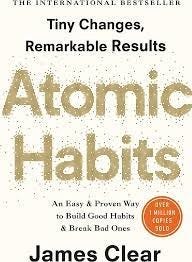
It’s hard to talk about good habit books without talking about Atomic Habits by James Clear. It’s one of the reasons why I called this newsletter 1% Better at Work. James has a story about the British Cycling Team where they looked for minor improvements everywhere — from the comfort of the seat to recovery and sleep and nutrition to even the clothing the team wore. Each by themselves was perhaps a 1% improvement, but together, the improvements compounded and led the British Cycling Team to multiple gold medals at the Tour de France and the Olympics.
That’s what I want to leave you with today — choose one small habit you can change in 2024. Maybe it’s meditating for 10 minutes each day. Maybe it’s taking three deep breaths when something triggers you. Maybe it’s adopting Meatless Mondays as a diet. Whatever it is, stick with it. You won’t see any results the first day, the first week or even the first month, but stick with it long enough and you will see the benefits.
Breaking the Habit of Being Yourself by Dr. Joe Dispenaza
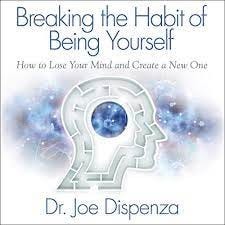
If you have ever wanted to break a bad habit and form a new one, read this book by Dr. Joe Dispenza. The funny thing about this book is there is probably nothing new in this book that is going to make you go “wow, I didn’t know that!” and then suddenly make you release all the bad habits you have. Instead, there’s a methodical approach which I’ve summarized based on my understanding:
- Recognize the bad habits you have
- Release that ‘old’ self and visualize what your ‘new’ self wants instead
- Practice your ‘new’ self and use regular reflection and reminders to remember what your ‘new’ self wants
For example, perhaps you want to give up binging Netflix late at night before bed. Instead, you want to read a book or spend time with your partner. First, recognize that according to your goals, you don’t think binge-watching Netflix is good for you. Second, you want to adopt a different habit such as reading or quality time with your partner. You visualize what this means for you and what you will get out of it: maybe something new to try at work or at home or the opportunity to connect with your partner. Finally, maybe you fail a few nights and go back to binging Netflix — that’s okay — use tools like meditation or journaling to reflect on why you went back to binging. Was it because books are too ‘hard’? (Instead, maybe read one or two pages or listen to an audiobook instead) Was it because your partner wasn’t interested in connecting with you? (Perhaps they don’t see before bedtime as the right time to connect)
Your daily practice
The Practice by Seth Godin
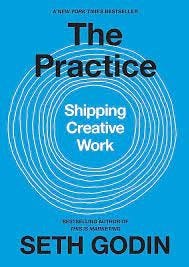
One of the most important messages in The Practice for me is the idea that today, no results are guaranteed. Before (and this applies to everything from business, art, music, etc.), you could follow a process and get a good outcome. Nowadays, the world is changing so quickly that you can’t just follow a proven process to get what you want.
Instead of focusing on the outcome and the results you want, instead, focus on your practice (that is, how you create). Be consistent. Spend time reflecting every day and getting a little better. Get it out into the market.
For example, let’s apply this to work. Maybe you’re someone who works in Excel sheets all the time. Every day, see if you can make your Excel sheet a little better — maybe it’s through formatting and making things clear, maybe it’s through a formula you’ve learned on LinkedIn Learning, or maybe it’s talking with someone who has more experience than you in working in Excel sheets. Share what you have learned with colleagues. There are no guarantees that doing any of this work will get you a raise or promotion — but the flip side of not doing this is staying where you are.
The War of Art by Steven Pressfield

First, let’s define ‘art’ as anything you want to create. It isn’t just about writing a book or drawing a painting, it can also be about starting a business or tackling a project. Steven’s thesis in his book is that whenever we are creating art, we are engaged in a battle with something called the resistance. The resistance is anything that prevents you from doing your work — it can be procrastination, the lull of an easier project, or more brainstorming. Every day, you fight the resistance. And while I think it’s a bit dramatic (but true), the battle with the resistance can cost you your life.
Tackling hard conversations
Fierce Conversations by Susan Scott
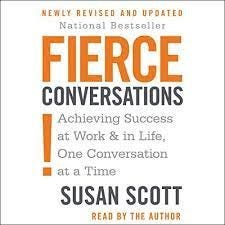
I’m a collector of great questions, and the one question that helped me have better conversations was “What did you contribute (to the problem)?”
We go into difficult conversations and we have a story in our heads. This person cheated on me. This person stole credit for my work. This person is acting like a jerk. The story then tells us we want the other person to take responsibility. Except the story we tell ourselves isn’t the full story (it’s only our side of the story). That’s the best time to pause and think
“What was my contribution to the situation?”
“But Wang, my situation is different, the other person is 100% to blame.”
Look hard for your contribution anyway because if you start with what you contributed, it tends to lead to better conversations.
Thanks for the Feedback by Douglas Stone and Sheila Heen

I used to think there wasn’t anything to receiving feedback, but Douglas Stone and Sheila Heen changed my mind. Receiving feedback isn’t a passive process, it’s one in which you, as the receiver, can do a lot, especially if the feedback isn’t right, triggers emotions, or makes you question your identity.
One of the biggest learnings for me from the book is that as a feedback receiver, there are three ‘triggers’, resulting in feedback that doesn’t help you (and you do have to have the perspective that while not all feedback might be useful to you, some of it is and critical for your growth and personal development).
Those three triggers? A truth trigger (where the feedback may not be the whole truth), a relationship trigger (where the feedback is influenced by the relationship you have with the other person — think about feedback from a stranger vs. feedback from a partner), and an identity trigger (where the feedback is in conflict with what you perceive your identity to be).
Even understanding those three triggers will help you go a long way to being a better feedback receiver (and the book goes into the specific tactics you can use to work through each of the triggers if you encounter them when receiving feedback).
Improving your focus
Deep Work by Cal Newport

Although I would like to recommend Cal Newport’s book Slow Productivity, it doesn’t come out until March 2024. Instead, reading Deep Work will give you a sense of where Cal is going with his thinking.
To get our best work done — the work that requires significant thinking, processing, and reflecting — we can’t take a scattered approach. What I mean by scattered is going to work, seeing notifications pop up on your phone, answering emails that come in, letting your coworkers ping you or ask you a quick question, and otherwise not getting a good chunk of time to get into the flow.
One thing I’ve started to do that helps me get more done and manage overload is to time-block my calendar. If we have 8–9 hours of work, rather than try to work through an endless to-do list, figure out where you have large chunks of uninterrupted ‘deep work’ time and schedule your most important tasks there. You can do anything with your time, but you can’t do everything so why not focus on the few tasks you can accomplish? What tasks? How many of those tasks? That’s where time-blocking comes in.
Four Thousand Weeks by Oliver Burkeman
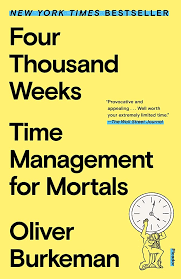
I’ll admit this is a strange book to recommend in a section about improving focus, but what I got out of this book was the following:
- Time is limited so we shouldn’t expect to get everything done, nor should we get stressed by our ever-growing to-do list or bucket list.
- Productivity ‘hacks’ or the best productivity apps may be great YouTube videos or articles, but what you have to remember is you don’t get more satisfaction by eking out a few more tasks because your app or clever hack saves you an hour or two.
- You can either think of productivity as an endless to-do list that you have to blaze through every day OR you can think of productivity like the time you have on this planet — you have enough to make a lot of progress on a few tasks, but you don’t have the time to do everything you want.
Creativity
The Magic of Thinking Big by David J. Schwartz
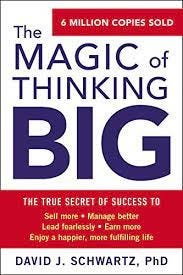
In the first chapter of the book, the author shares a story about a sales company that has gathered all of its salesmen together. The company points to Harry, an average salesman. Harry earns $60,000 a year compared to other salesmen who only earn $12,000 a year. They then ask the audience why. It’s not because Harry is 5x smarter (they conducted personnel tests to check). It’s not because Harry had a better sales territory. It’s not because Harry worked 5x harder (in fact, he took more vacation than other salesmen).
The reason he earned 5x more than other salesmen? He thought 5x bigger.
The Joy of Thinking Big by Ernie Zelinski

Bonus points for Ernie who is an Edmonton-born author. My favourite takeaway from The Joy of Thinking Big is the idea of not stopping brainstorming ideas once you have a good idea, instead, stop when you reach a hundred or a thousand different ideas (or more).
The point is when we have a problem, we tend to brainstorm until we get a good enough idea, but that severely limits the different options and alternatives we have, which in turn, means we limit our opportunity to find an amazing idea.
- For the next problem you face, brainstorm 20–30 ideas.
- If you find it hard to brainstorm that many ideas, lower your standards. Your idea doesn’t have to be feasible. Your idea doesn’t have to be realistic. Your idea doesn’t have to be possible.
- Play around with words and meanings. How do you get someone to stop talking? Take away their mouth.
